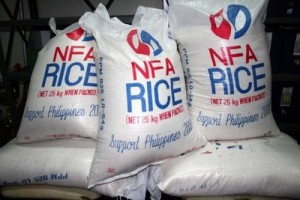Gov’t backtracks, will continue rice imports
MANILA, Philippines—The Aquino administration goal to achieve rice self-sufficiency this year may have to wait a little longer.
The government on Tuesday appeared to have backtracked from its bold prediction of achieving rice self-sufficiency in 2013, after it was learned that the National Food Administration (NFA) had already approved the importation of 187,000 metric tons of rice for the year.
The NFA is the agency tasked to ensure food security and the stability of the supply and price of rice.
There was no immediate reaction from President Aquino who wants the Philippines, the world’s largest importer of rice, to attain full self-sufficiency as soon as possible.
Agriculture Secretary Proceso Alcala earlier predicted the palay harvest this year would yield around 20 million metric tons of rice—enough to feed a Philippine population that is expected to breach 100 million mark by the time Aquino ends his term in 2016.
Article continues after this advertisementAs he traveled around the country to campaign for Team PNoy, the President has been profusely thanking Alcala in his speeches for supposedly working hard to make this goal a reality.
Article continues after this advertisementAmbitious goal
The Asian Development Bank earlier warned that the goal was rather ambitious because of infrastructure constraints in the countryside.
Other critics of the much-touted rice drive said the focus on attaining self-sufficiency has restricted the entry of cheaper rice into the domestic market.
But Aquino said this target would depend on the cooperation of the “weather” as the country was in the direct path of some 20 typhoons emanating from the Pacific Ocean every year.
At a Palace news briefing on Tuesday, reporters asked why there was a need to place an import order for rice when the country still has to be hit by a single calamity.
Presidential spokesman Edwin Lacierda, quoting Alcala, said, “We are on track to meet our domestic requirements for rice. However, if there is a weather disturbance that will damage our crops, we want to be prepared.”
“What we imported is meant to serve as buffer against any force majeure. Please note that the 187,000 metric tons is a far cry from the 2.4-million metric tons in 2010,” he said.
He also pointed out that rice self-sufficiency could not be equated with the ability of the country to start exporting rice.
“Please note that when the President speaks about rice self-sufficiency, he always qualifies with the words ‘weather permitting,’” Lacierda added.
Dramatize campaign
However, it was the President himself who declared 2013 as the National Year of Rice to dramatize his campaign to achieve rice self-sufficiency this year.
At the World Economic Forum in Switzerland that he attended in January, Aquino said that the Philippines could attain full self-sufficiency and even turn into an exporter before the year was over.
“From importing almost 2.5 million MT of rice in 2010, now, if the weather permits, we are looking at full rice self-sufficiency—and even the possibility of exporting it—by the end of this year,” he told the forum.
This quest for rice self-sufficiency is apparently part of the reforms that Aquino is pursuing.
The President said his predecessor, former President Gloria Macapagal-Arroyo, had allowed the NFA’s debt to balloon to $4.4 billion from $300 million over the course of Arroyo’s nine-year term as her government allegedly insisted on importing more rice than was needed to feed the people.
Since 2010, Aquino said more funds have been plowed into irrigation, arterial roads, research into higher-yielding varieties, and other technologies, thus making this goal of self-sufficiency viable.
In 2010, the country imported 2.4 million MT of rice, but this was reduced to 860,000 MT the next year. This was further reduced to 500,000 MT in 2012.
